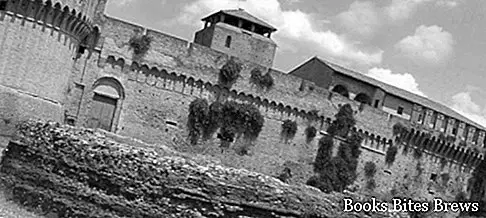What to see in Imola, itinerary including the main monuments and places of interest, including Rocca Sforzesca, San Cassiano Cathedral, Episcopal Palace and Municipal Theater.
Tourist information
Located along the Via Emilia, where the Apennine valley of the Santerno river flows into the Po valley, Imola was born as a Roman colony in the second century before Christ, but the first human settlements in the area date back to the Paleolithic era.
The remains of a village dating back to the Villanovan era came to light in Pontesanto, a town located along the Via Emilia, and among them some tombs containing very interesting funerary objects.
The village of Monte Castellaccio and the necropolis of Montericco constitute interesting testimonies of the populations having Umbrian characteristics, who settled in the area between the fourth and fifth century BC.
The main monuments and places of interest include the Rocca Sforzesca, an imposing medieval building, with a quadrangular plan and four towers at the corners, which is an excellent example of fortified architecture from the period between the Middle Ages and the Renaissance.
Inside there is a collection of weapons and a large collection of medieval majolica.
The city's Art Collections are housed on the second floor in the former fourteenth-century convent of San Domenico.
What see
In the new museum itinerary, ordered by thematic and chronological sections, about 600 pieces are exhibited including paintings, sculptures, ceramics, drawings, coins and medals from the civic collections, all interesting materials for a historical reconstruction from the Middle Ages to the contemporary, with the main theme city of Imola, whose places, events, tastes and lifestyles of the inhabitants are highlighted.
The visit itinerary winds inside the former Dominican convent, which preserves the ancient chapter room, containing frescoes from the early fourteenth century, the sixteenth-century library and an unexpected entrance into the pulpit of the Church of San Domenico.
The Cathedral of San Cassiano, dating back to 1100 and subsequently restored, has an interior with three naves where a beautiful baptismal font and a sixteenth-century wooden crucifix are preserved, as well as the remains of San Cassiano and San Pier Crisologo.
The central nave is very wide, on the sides there are deep chapels, the presbytery area forms a grandiose setting, comprising two symmetrical stairways that rise from the side aisles, and two more from the central one towards the presbytery, while a larger staircase, placed in a central position, it descends into the crypt.
Recommended readings- Brisighella (Emilia Romagna): what to see
- Grazzano Visconti (Emilia Romagna): what to see
- Castelnovo ne ’Monti (Emilia Romagna): what to see
- Canossa (Emilia Romagna): what to see
- Emilia Romagna: Sunday day trips
Close to the Cathedral is the Bishop's Palace which houses the Diocesan Museum dedicated to sacred art.
The Teatro Comunale, the most important in Imola, is dedicated to the opera singer Ebe Stignani, born in 1903 and died in 1974, it is mainly used to host prose and music performances on a national level.
The Great Hall of the Stignani Theater can hold up to 468 people, divided between the stalls, three tiers of boxes and the gallery, while in the basement, with 99 seats, a giant screen is installed which is used only on certain occasions.




